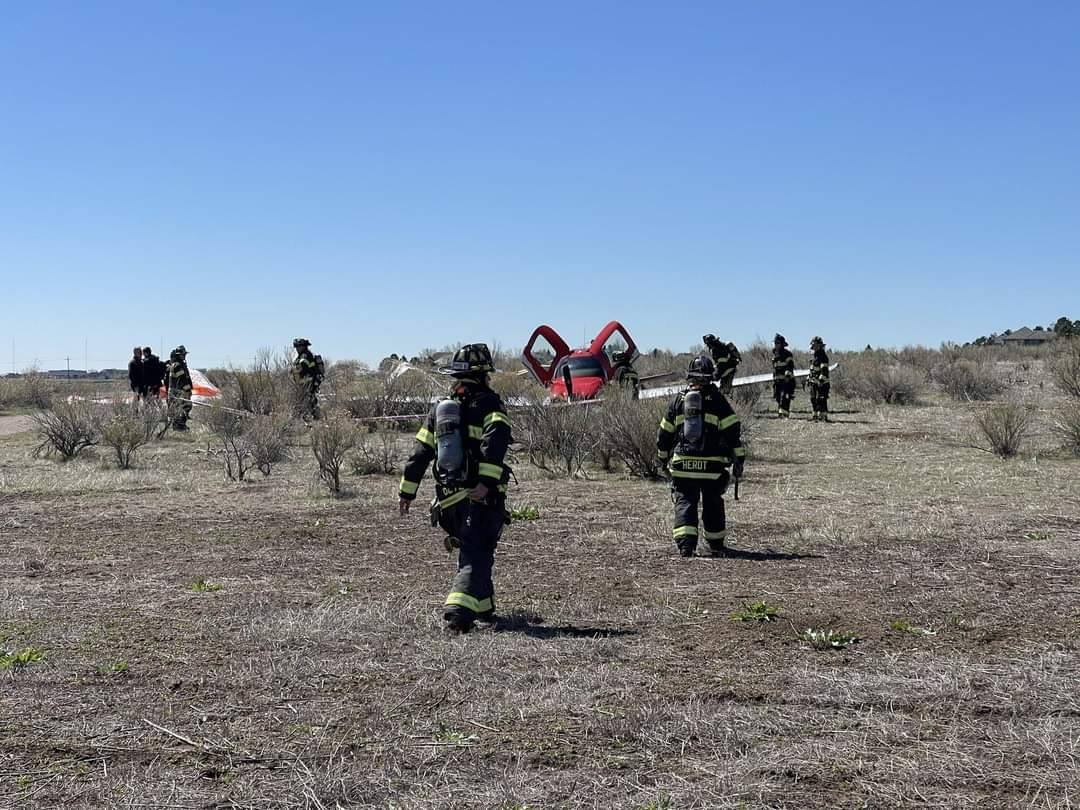According to the US NTSB department, the Cirrus SR22 aircraft pilot’s high-speed turn from base leg to final resulted in overshooting the centerline and entering a parallel approach path, leading to a collision with a Swearingen Metroliner.
The accident occurred on May 12, 2021, at Colorado’s Centennial airport, causing substantial damage to both planes on different tower frequencies.
The pilot and passenger of the Cirrus survived after deploying its recovery parachute, and the Metroliner’s pilot landed safely.
The airport’s parallel runways, 17R and 17L were in use, with the Metroliner approaching 17L and the Cirrus flying downwind on a right-hand traffic pattern for 17R.
The Cirrus, under manual control, was flying at about 148kt during the base leg, although the recommended approach speed with flaps up was around 90-95kt.
Today, May 12th, a mid-air collision of a Metroliner and a Cirrus SR22 occurred near Denver, Colorado.
Cirrus SR22 (N416DJ) flight data:https://t.co/TDJT2MiyXE
Swearingen SA226-TC Metro II (N280KL) flight data:https://t.co/d16A6OVnHj#NTSB #Denver #N416DJ #N280KL #RadarBox https://t.co/4BAddDZcD0 pic.twitter.com/YQrM9ZU6Jp
— RadarBox (@RadarBoxCom) May 12, 2021
Cirrus SR22 and Metroliner Collision
During the Cirrus SR22’s turn to final approach at Centennial Airport (APA) in Colorado. The aircraft collided with a Swearingen Metroliner after overshooting the centreline and straying into a parallel approach path.
The accident occurred on May 12, 2021, and both aircraft were significantly damaged. However, the Metroliner managed to land safely while the Cirrus deployed its recovery parachute.
The collision occurred halfway through the turn to final, on a heading of 146°, about 3.2nm north of the airport and at an altitude of about 735ft, causing a large section of the upper aft fuselage to be torn out.
The Key Lime Air aircraft, which was being positioned from Salida, landed safely despite the damage. According to the Metroliner pilot’s statement to investigators, he initially checked the engine controls, thinking that one of the powerplants had failed after hearing a “tremendous explosion.”
Despite the damage, the Cirrus activated its parachute system and landed about 3nm north of the airport. Furthermore, the collision took place in good daylight weather conditions.

NTSB Report
The US National Transportation Safety Board (NTSB) has found that the Cirrus pilot’s decision led to the crash. The pilot flew at a higher speed than the recommended approach speed, resulting in a larger turn radius and an overshoot of the 17R approach.
The aircraft deviated into the 17L approach path, and its course would have taken it further left of the final approach course for 17L. Then it had not collided with the Metroliner, according to the investigation.
However, the inquiry also revealed that the two aircraft were communicating with different tower controllers. Both were on separate radio frequencies while approaching the airport.
The controller handling the Cirrus cleared it to land on 17R and provided traffic advisories to the pilot. However, the Metroliner’s controller, who also had landing clearance, did not give the pilot an advisory about the Cirrus’s location.
The inquiry noted that if the controller had issued an advisory. The Metroliner pilot might have identified the conflict and maneuvered the airplane to avoid the collision.
Both pilots had been advised of the presence of another aircraft. A Cessna, which had been in the traffic pattern for 17R ahead of the Cirrus. It revealed that Cirrus’s avionics system issued a traffic alert that remained on until the collision 36 seconds later.
What do you think about this unfortunate accident? let us know in the comments on our social media handles.
Also Read, INCIDENT A Boeing 737-900 made an emergency landing after a bird entered an engine – AIRLIVE.